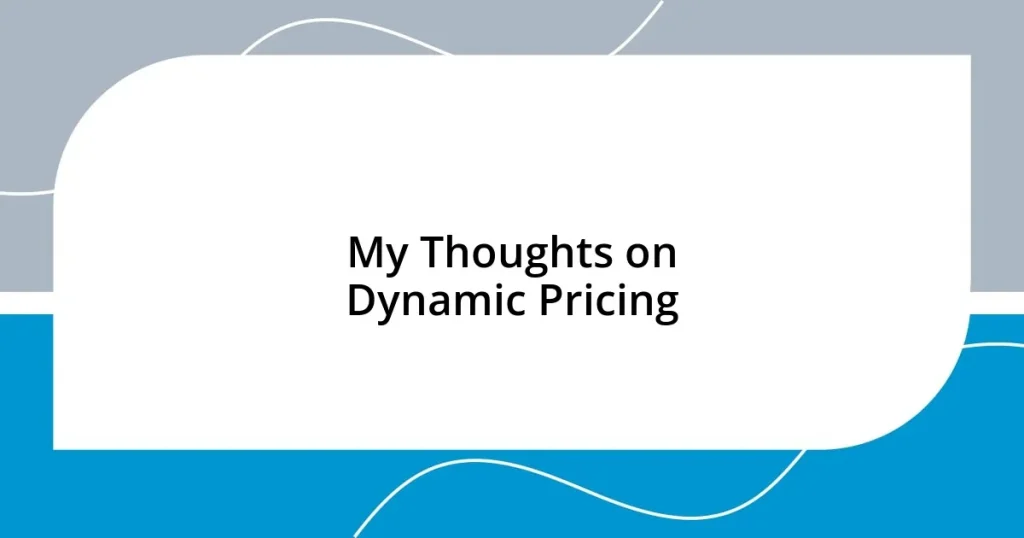Key takeaways:
- Dynamic pricing allows businesses to optimize revenue by adjusting prices based on real-time supply and demand factors.
- While dynamic pricing can lead to increased sales and consumer savings, it also poses challenges like eroding consumer trust due to frequent price fluctuations.
- Effective implementation of dynamic pricing requires advanced technology and data analytics, which can be costly and complex for businesses.
- Tools such as Price Optimization Platforms and Competitor Price Monitoring help businesses adapt swiftly to market changes and stay competitive.
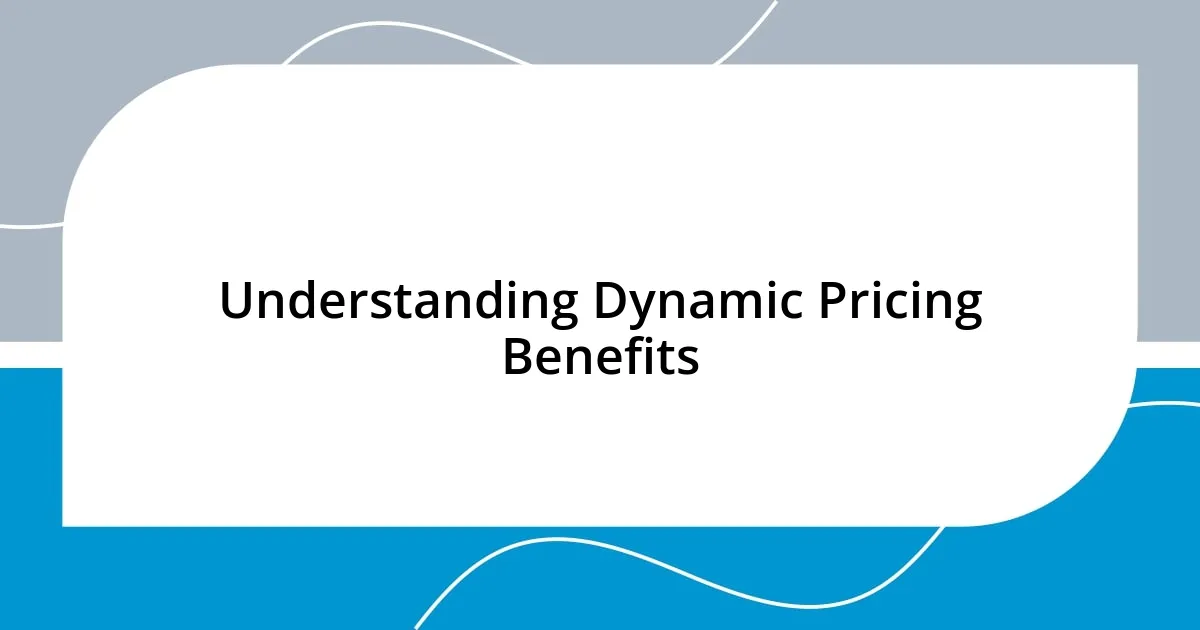
Understanding Dynamic Pricing Benefits
Dynamic pricing offers businesses the ability to respond to consumer demand in real-time, which means they can optimize their pricing strategy to maximize revenue. I remember feeling pleasantly surprised when, after checking flight prices multiple times, I noticed how the fare changed based on the day of the week— it made me more aware of the strategy at play. Have you ever wondered why prices fluctuate so much?
One of the most significant benefits of dynamic pricing is its potential for increased sales velocity. For instance, I once kept an eye on a concert ticket’s price, which dropped the night before the event. I took the plunge and bought it, discovering firsthand how businesses can fill seats while creating urgency for consumers. Have you had moments like that, where a temporary price drop sparked your decision to buy?
Moreover, dynamic pricing isn’t just about businesses making more money; it can also benefit consumers by providing opportunities for savings. I’ve experienced joy in snagging discounted deals on popular products during flash sales. It’s exhilarating to feel like you’ve gotten a once-in-a-lifetime deal, isn’t it? This back-and-forth of market dynamics helps both sides, making it a compelling model.
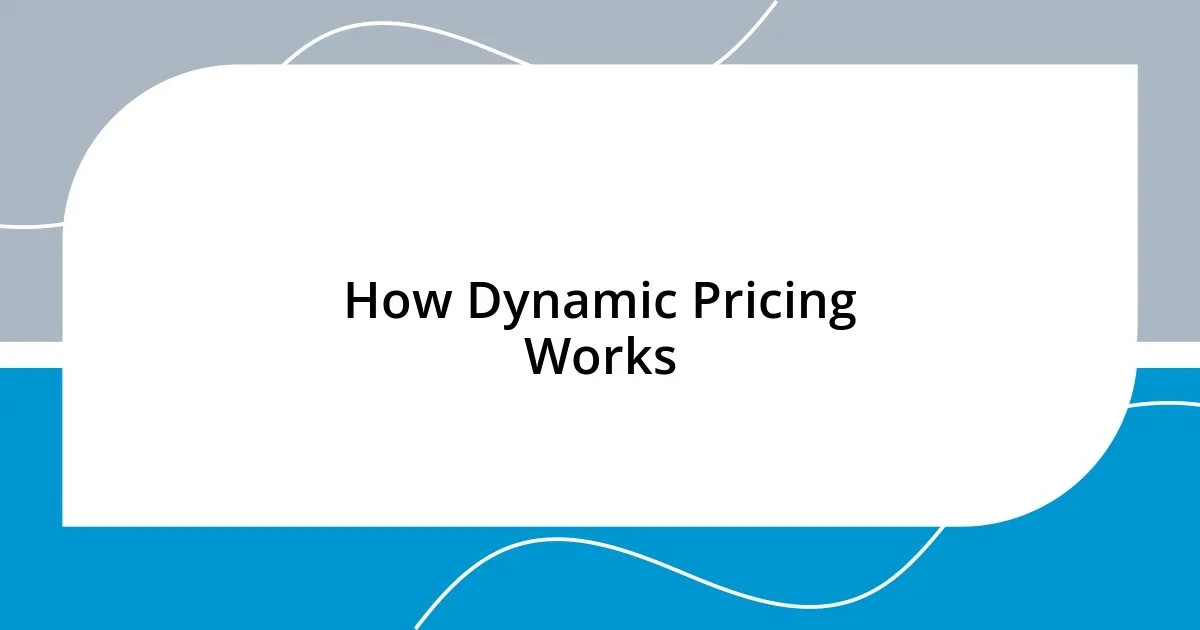
How Dynamic Pricing Works
Dynamic pricing operates by adjusting prices in response to real-time supply and demand factors. I once found myself in an amusement park where ticket prices surged after noon. Witnessing that price change in action made me realize how businesses utilize data to gauge visitor flow and maximize their earnings. Have you noticed similar patterns when buying tickets or reserving services?
At its core, dynamic pricing relies on algorithms that analyze various data points. These can include competitor pricing, customer behavior, and even historical trends. I vividly recall shopping online during the holiday season, where I watched specific items fluctuate in price based on competitor moves. It felt like a game of chess, where every strategic move could either save or cost me money. As consumers, we must be aware of how these fluctuations may impact our shopping experiences.
Moreover, this pricing strategy often leads to segmentation, where different customers see varied prices for the same product. An example from my experience is how rideshare apps can change fares based on demand during peak hours. When I ordered a ride late on a Friday night and faced a surge charge, I felt a mix of frustration and understanding; it’s all about balancing availability and demand. Dynamic pricing weaves a complex tapestry that reflects the ever-changing nature of consumer behavior.
| Aspect | Description |
|---|---|
| Real-time Adjustments | Prices change based on immediate market conditions and data analysis. |
| Data Utilization | Algorithms analyze competitor prices and customer behavior to determine pricing strategies. |
| Customer Segmentation | Different customers see different prices for the same product based on demand. |
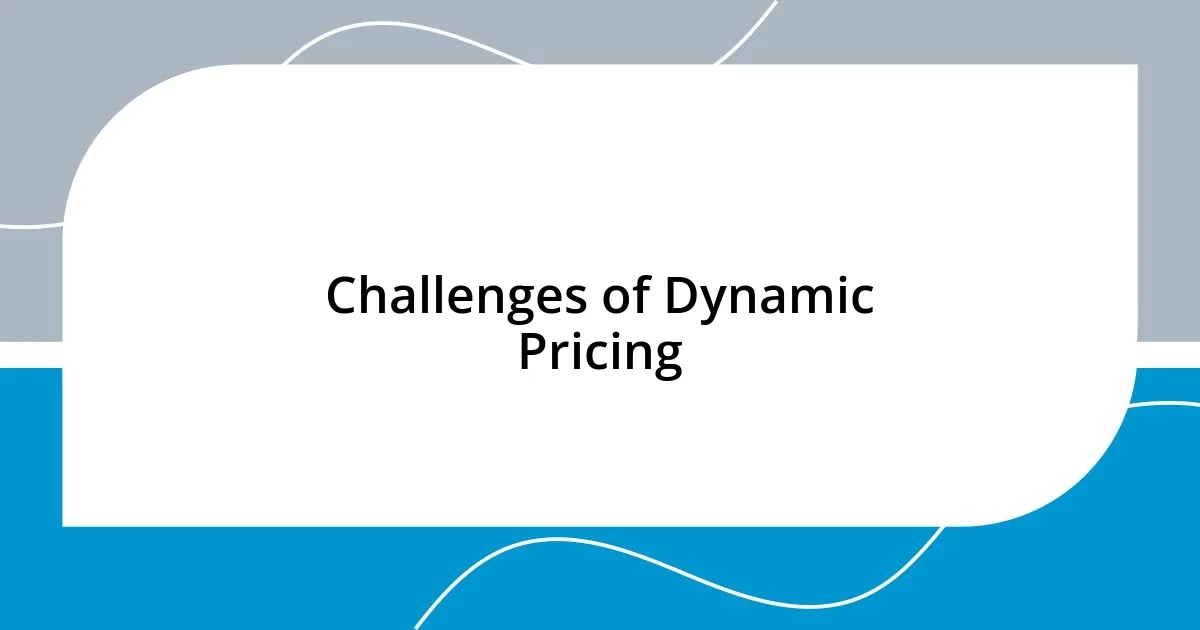
Challenges of Dynamic Pricing
Dynamic pricing presents various challenges that can affect both businesses and consumers. It can often lead to customer dissatisfaction, especially when price changes feel unfair or arbitrary. I recall a time when I booked a hotel room at a reasonable rate, only to find out later that my friend secured a better deal just hours after my booking. That sense of frustration gnawed at me. It raised questions about the transparency of pricing strategies and whether consumers were being treated equitably.
Here are some key challenges associated with dynamic pricing:
- Consumer Trust: Frequent price fluctuations can erode trust between businesses and their customers.
- Price Sensitivity: Customers often react negatively to price changes, leading to potential loss of loyalty.
- Complexity of Implementation: Businesses need advanced technology and data analytics, making initial setup expensive and time-consuming.
- Legal and Ethical Concerns: Dynamic pricing can raise legal issues concerning price discrimination, especially in regulated industries.
The complexity of managing these challenges is something businesses must navigate carefully. For those of us on the consumer side, it’s vital to stay informed and mindful of how these pricing strategies might influence our purchasing decisions and overall experiences.
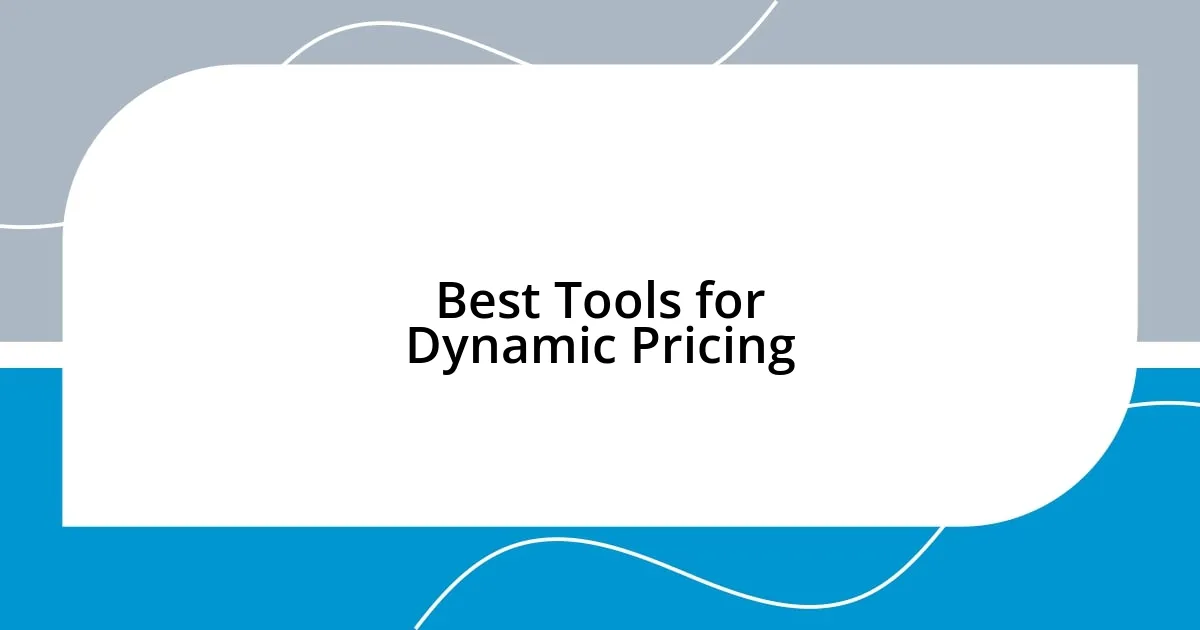
Best Tools for Dynamic Pricing
When it comes to dynamic pricing tools, I’ve found a few gems that stand out in the market. One tool, “Price Optimization Platform,” leverages machine learning algorithms to analyze prices and forecast customer demand. I’ve worked with it during my stint in retail, and it truly transformed how we approached pricing. Imagine seeing real-time data that could adjust prices within hours – it’s exhilarating! Have you ever thought about how quickly prices can shift to match market trends?
Another noteworthy tool is “Competitor Price Monitoring,” which offers insights into how your competitors are pricing their products. I remember using this tool for a small e-commerce venture, and it felt like having a secret weapon. The insights allowed us to remain competitive without sacrificing our margins. Can you relate to the stress of needing to keep an eye on your rivals?
Lastly, “Revenue Management Systems” come in handy for businesses in industries like travel and hospitality. These systems help automate price changes based on various factors including seasonality and occupancy rates. I recall booking a flight and being astonished at how fare prices seemed to change from one minute to the next. Diving into analytics for pricing strategies isn’t just smart; it often feels like a necessary step in today’s fast-paced market landscape. It truly makes me appreciate the blend of technology and strategy in shaping business dynamics.











